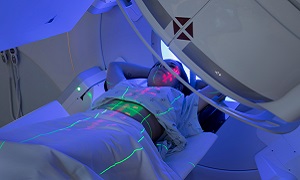Best Doctors in India for Glioblastoma treatment
Best Hospitals in India for Glioblastoma treatment
- City: Bengaluru, India
Hospital Highlights:
- Fortis Hospital Bannerghatta, Bengaluru was established in 2006.
- The hospital is a 276 bedded multi-specialty tertiary care facility.
- The hospital specializes in cutting-edge medical technology and dedicated patient care services.
- The hospital is equipped with state-of-the-art technologies like trans-radial angioplasty, trans-abdominal cardiac surgery, and computerized TKR navigation surgery.
- The hospital provides specialty medical services in cardiology, cardiac surgery, orthopedics, neurology, neuro-surgery, GI, and Minimal Access Surgery (MAS).
- City: Chennai, India
Hospital Highlights:
- Fortis Malar was established in 1992 and was formerly known as Malar Hospital.
- The hospital specializes in cutting-edge medical technology and dedicated patient care services.
- The hospital is multi-specialty, tertiary care facility with 180 beds.
- The hospital offers comprehensive medical care in specialties such as cardiology, cardio-thoracic surgery, neurology, neurosurgery, orthopedics, nephrology, gynecology, gastroenterology, urology, pediatrics, and diabetes.
- City: New Delhi, India
Hospital Highlights:
- Established in 1996, Pushpawati Singhania Research Institute is one of the top hospitals in the NCR region, as well as one of the top facilities in India for gastroenterology. The hospital is one of South Asia’s first institutes in medical and surgical treatment for diseases related to digestion.
- The hospital is equipped with state-of-the art facilities coupled with the latest equipment as well as renowned consultants from various parts of India as well as other parts of the world.
- City: New Delhi, India
Hospital Highlights:
- State-of-the-art technology and devoted healthcare professionals have been brought together under one roof at Venkateshwar Hospital to provide genuine medical care. The hospital’s professionals work together as a team to deliver the best possible treatment to their patients, using the most sophisticated equipment and information technology.
- Venkateshwar Hospital’s mission is to attain global excellence in healthcare by employing evidence-based, ethical clinical practices and cutting-edge technology by a team of highly skilled experts.
- City: New Delhi, India
Hospital Highlights:
- Sir Ganga Ram Hospital, New Delhi is known to provide the latest medical procedures with the latest technology in all of its units.
- The hospital has a team of reputed doctors, nurses, and healthcare professionals that ensure that patients receive quality care at affordable costs.
- Staffed with a team of highly qualified doctors, dedicated nurses, and paramedical and non-medical staff, the hospital aims to lead in healthcare delivery, medical education, training, and research.
- As per the vision of the founder, the hospital also provides free treatment to the economically weaker sections of society.
- Sir Ganga Ram Hospital also provides training to young doctors under the Diplomate in National Board(DNB) program. The DNB program at the hospital was started in 1984 and it is known for currently running the maximum number of DNB specialties in the country. It also has the distinction of having the first bone bank in India.
- City: Kerala, India
Hospital Highlights:
- Established in 2019, Apollo Adlux Hospital is the first Apollo Hospital in Kerala and the 73rd hospital owned by Apollo Group in India. With the state’s most advanced, comprehensive healthcare infrastructure and cutting-edge technologies, Apollo Adlux Hospital stands as an example of medical excellence in Kerala.
- With over 34 multi-specialty departments, the hospital believes in providing the best quality treatment to its patients at affordable rates, ensuring comfort at their difficult times.
- The 300-bed hospital is managed by a team of highly qualified and experienced experts who delivers exceptional hospitality to their patients and treats them with great compassion.
- With its affiliation with the Apollo Hospitals Group, the hospital aims in providing patients with top-notch healthcare services while also serving communities in Kerala.
- The hospital has good railway and road connections, and is conveniently close to Cochin International Airport.
- City: Gurugram, India
Hospital Highlights:
- Situated near DLF Cyber City, Gurugram, Narayana Superspecialty Hospital is one of the top medical facilities in the Delhi NCR region, catering to the needs of the people. Known for its commitment to quality medical care and patient service, the hospital is a state-of-the-art facility with planned and well-equipped sections, which includes a spacious OPD area as well as comfortable patient rooms.
- It is the closest super-specialty hospital from Indira Gandhi International Airport towards Gurugram, and also the nearest super specialty hospital from DLF Cyber City. It is also close to major residential areas in Gurugram.
- It is part of the renowned Narayana Health Group. Established in 2000, by Dr. Devi Shetty, a renowned cardiac surgeon, it has grown to be one fo India’s leading healthcare groups.
- City: Noida, India
Hospital Highlights:
- Fortis Hospital, Noida, stands as one of the oldest and most trusted healthcare institutions in the region, setting a benchmark for comprehensive medical care.
- As the second mega hub hospital in the Fortis Healthcare Group, Fortis Hospital, Noida, upholds a legacy of trust among more than 1.2 million patients. By integrating top-tier professionals with cutting-edge technology, the hospital delivers superior treatment across various medical disciplines.
- Specializing in advanced Neurosciences, Orthopedics, Kidney and Liver Transplant Programmes, Fortis Hospital, Noida has successfully performed over 1,500 transplants, solidifying its reputation as a leader in specialized medical interventions.
Glioblastoma
Glioblastoma is an aggressive tumor occurring in the brain or the spinal cord. It forms from astrocytes (star-shaped cells) that support the nerve cells. Although this type of cancer can occur to people of any age, it is more common in elderly people. Another name for the disease is Glioblastoma multiforme. This malignant brain tumor spreads fast and grows quickly. This cancer begins in the cerebrum, which is the largest part of the brain, in adults. The tumor makes its own blood supply which helps in its growth. It easily invades the normal tissues of the brain. One may observe a slight male predilection.
Types of Glioblastoma
Glioblastoma is of two types. They are:
- Primary Glioblastoma: It is the more common type and the most aggressive form of Glioblastoma.
- Secondary Glioblastoma: It grows slowly and is less common. It begins from a less aggressive astrocytoma. Affecting nearly 10 % of people, most of the affected people are under the age of 45 years.
Causes of Glioblastoma
The exact cause of Glioblastoma is still unknown. Similar to other cancers, it begins when there is an uncontrolled growth of the cells and leads to tumors. However, this cell growth relates to the changes in the genes of your body.
Symptoms of Glioblastoma
When Glioblastoma presses on the parts of your brain, it may give rise to symptoms. You won’t have any symptoms if the tumor isn’t very large. The location of the tumor within your brain is largely responsible for determining the type of symptoms that you will face. These symptoms can be:
- Nausea
- Memory loss
- Muscle weakness
- Headache
- Weakness on a side of your body
- Mood changes
- Double vision
- Seizures
- Sleepiness
- Problems with speech
- Vomiting
- Personality changes
- Loss of appetite
- Blurred vision
Diagnosis of Glioblastoma
Neurological examination
During neurological examination, your doctor will ask you about the signs and symptoms during the neurological examination. He or she may inspect your hearing, coordination, reflexes, vision, balance and strength. If you are having problems in any of these, then it will reveal the part of your brain affected by the tumor.
Imaging tests
Imaging tests will help your doctor to determine the size and location of the tumor within your brain. He or she may use MRI (Magnetic Resonance Imaging), CT (Computerized Tomography) scans, and PET (Positron Emission Tomography) to diagnose the tumor.
Biopsy
Biopsy involves the removal of a sample of tissue for testing. Your doctor will use a needle to remove a part of Glioblastoma, depending on its location. He or she will send this sample to the laboratory for analysis to find the type of cells and how much aggressive they are. These specialized tests will help your doctor to determine the types of mutations with these cells.
Treatment options for Glioblastoma
Surgery
Radiotherapy
Chemotherapy
It can be of great help. The doctors mostly use chemotherapy drugs like Temozolomide, carmustine and lomustine.
Targeted drug therapy
Wafer therapy
Convection-enhanced delivery (CED)
Nanoparticle therapy
Palliative care
Supportive care is important for anyone suffering from a tumor or a type of cancer. It including taking care of everything and help you deal with the disease in a better way. It also helps to deal with the other symptoms of Glioblastoma. Ultimately, it improves the quality of life that you are spending.
















